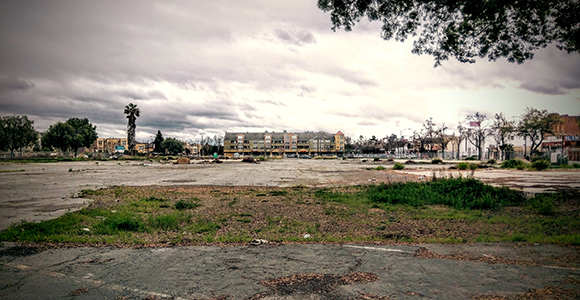
San Jose, California (Photo: Travis Wise/Flickr)
Gov. Newsom issued something of a disclaimer as he unveiled a new set of budget requests aimed at tackling housing and homelessness in last week’s May Revision.
“I am not naive,” Newsom said, referring to his goal of seeing 3.5 million new housing units built by 2025. “We have an audacious goal. I am reading the [pundits who] say it’s impossible. They may be right.”
The comment serves as a reality check on how much can be accomplished in an environment that is severely under-producing housing. California added just 77,000 units last year (“deplorable,” Newsom said), a number that represents a two-year decline just as production needs to be steeply rising.
In Newsom’s May Revision, the elements of a housing package are starting to emerge. Paying for the unglamorous but undeniable problem of housing-related infrastructure is clearly on the table, along with some kind of protections for tenants.
The Revision proposes to double legal assistance to tenants facing eviction (to $40.4 million), and to establish a $500 million grant program to help cities pay for sewers, roads and water and other infrastructure necessary to build housing. It also maintains Newsom’s earlier commitment to housing tax credits that will provide more capital to fuel production of multi-family housing.
Running parallel to the governor’s proposal is a raft of bills from the Legislature, which has until June 15 to negotiate a final spending plan for the 2019-20 fiscal year. Some bills touch on infrastructure and renter protections, while others tackle regulatory hurdles and development fees that add to the cost of housing.
The most controversial bill – SB 50 by Sen. Scott Wiener (D-San Francisco) – was held Thursday in the Senate Appropriations Committee. The debate ignited by SB 50 cuts to crucial issues facing the state: how to achieve the sheer numbers of homes needed by Californians without running headlong into the state’s climate goals; how to protect disadvantaged communities from being displaced, and how to preserve the fabric of existing neighborhoods that feel they are already dense enough.
SB 50 proposes to cluster higher-density housing near jobs and transit, and allow fourplexes on land zoned for single-family houses, as long as setbacks and other local rules are followed. The bill is being held to allow more time for the legislation to be worked on before consideration by the entire Senate, but the debate on its approach is far from over.
Meanwhile, an equally important issue remains largely unaddressed: how to wrestle greater value from underutilized land already within developed areas.
The governor is inventorying surplus state land with an eye toward finding sites for affordable housing. And a number of related bills address the same notion of using government land to build housing, including measures from Asm. Phil Ting (AB 1486) and Sen. Jim Beall (SB 6).
But the problem, and the opportunity, is bigger than state leftovers. Myriad cities and suburbs across California have skipped-over parcels that represent lost opportunities to help provide housing and knit together communities.
David Sander, vice mayor of the Sacramento suburb of Rancho Cordova, articulated the bind many inner-ring suburbs face as they try to evolve strip malls into more vibrant uses including housing.
“Every jurisdiction in this country is facing the same challenge – how to reinvest along these suburban corridors,” Sander testified during a recent Senate Appropriations Committee hearing on another bill by Beall, SB 5, which would provide an ongoing source of infrastructure financing. Retrofitting sites so they are compliant with environmental and building codes can be double the cost of simply moving to a greenfield site and starting from scratch.
Another piece of the housing puzzle that has seen little attention is the overall problem of “affordability.” Working family incomes are insufficient to afford the current supply of housing, stemming from anemic growth of low- and middle-income wages. While increasing supply of lower-priced housing will help address that issue, the long game has to focus on increasing incomes, as well.
Gov. Newsom acknowledged the nexus between employment and housing at the conclusion of his May Revision comments on housing: “Something we don’t talk about enough,” he said, “is jobs. You want to solve homelessness? It’s not just housing…it’s self-sufficiency, it’s jobs.”
Without bold and creative strategies to reinvent obsolete developments and turn vacant land into vibrant places, and without due attention to policies that help families earn the wages they need to afford rents and mortgages, the housing debate runs the risk of lurching between false choices.
It needn’t be transit-oriented development or nothing. And it needn’t be subsidizing large swaths of the housing market into perpetuity or nothing. It ought to be transit-centered housing and leveraging the skipped-over, underperforming parcels that sit in nearly every community. It ought to be dramatically increasing housing now and helping create the jobs and wages that bring “affordability” and “housing” back into equilibrium.

